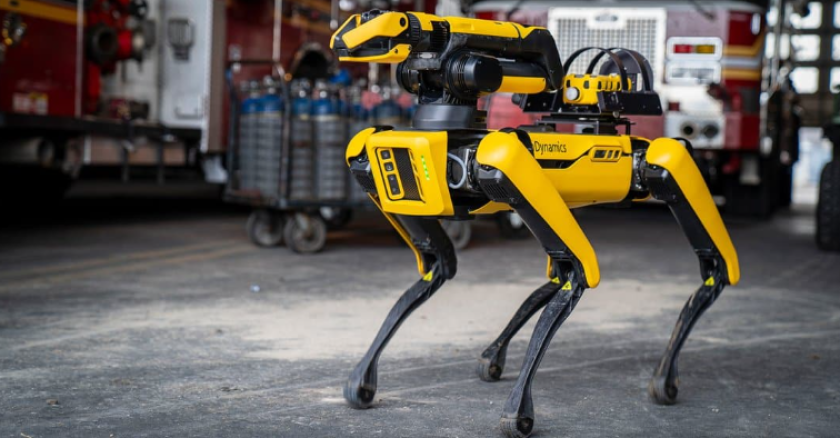Boston Dynamics, founded by a former MIT researcher, has developed robot technology since 1992. Its tech is used by about 50 public safety agencies across the country. Now, they’re leading a policy charge, working with legislators in a growing number of states including California, New York and Massachusetts to make it illegal to weaponize robots.
Currently there isn’t a law anywhere in the country that would prohibit weaponizing a robot.
“A lot of people are shocked to hear that, because it seems like something that should exist,” said Brendan Schulman, vice president of policy and government relations for Boston Dynamics. “This happens all the time, new technology comes along and that reveals that there is a gap that needs to be filled by lawmakers and that’s literally their job.”
Schulman explained the technology is being developed because “it's just common sense to put machines in harm's way rather than people.”
He said it’s always been the intention from the start at Boston Dynamics for the tools to be used for good, so from the start, the company has written into its terms of service restrictions on how the robots can be used. It doesn’t allow customers to add weapons to the robots. Violating the terms of service would be a breach in contract, resulting in the loss of the software license and potential legal action.
However, as a greater number of robot manufacturers enter the market, Boston Dynamics is concerned about what may happen in the future.
“Unfortunately, we’re not the only company out there, there are other makers of quadruped robots that anyone can obtain,” Schulman said, adding that other companies have “jerry-rigged” weapons to similar robots, then posted the videos on YouTube. Schulman said it’s a “reckless prank” that takes away from the true value of the technology and the lives the robots are saving when used by public agencies across the country.
WHAT DO PUBLIC SAFETY ROBOTS DO?
In a darkened Houston Police garage, lit by the blinking red and blue lights of a police cruiser, two four-legged robot dogs walked into the image and waited as a human police officer got out of the vehicle and stood in line with them.
“I’d like to introduce you to our two newest robotic platforms,” said Jason Countryman, a senior police officer in tactical operations for the Houston Police Department.
In the video, he goes on to explain how the two dog-like robots support the agency’s SWAT teams, used as de-escalation tools for barricaded suspects or high-risk felony warrants. The tech also can pick up and inspect packages or enter dangerous situations to provide situational awareness.
Similar use cases have emerged all over the country, including New York City, Los Angeles and Massachusetts, with the robots used for hazardous gas detection, suspicious package investigation, search and rescue, subterranean or confined space exploration and structural assessments following fires, disaster events and other emergencies.
Boston Dynamics feels these use cases are important, yet often not as attention-grabbing as the killer robots in movies such as Terminator. The company is now advocating for lawmakers to outlaw weaponizing them, so the public can fully experience and appreciate the good that can come out of the technology.
There’s legislative activity happening in New York, where the Responsible Robotics Act would prohibit the manufacture, modification, sale, transfer, equipping, use or operation of a robotic device or an uncrewed aircraft equipped or mounted with a weapon within the state. Anyone who mounts a weapon on a robot or drone would face anywhere from $25,000 to $100,000 in penalties.
Similar legislative attempts have occurred in California, with AB 2681, and in Massachusetts, with S.2483. Often, these pieces of legislation have exceptions for the U.S. military, defense contractors or law enforcement bomb squads.
While Schulman said there is “potential” for manufacturing robots with internal programming like anti-weaponization tech, teaching the robots to make sure they aren’t misused is a complicated problem to solve.
“What matters is not just detecting the misuse, but also making sure that legitimate use is not a false positive,” he said, adding that for example in the factory environment, where many Boston Dynamics robots are put to use, there are often unexpected noises and movements that might confuse anti-weaponization tech.
Instead, Boston Dynamics hopes more states will move to outlaw weaponization due to safety concerns. They envision a future where robotics will continue to improve and save the lives of humans.
“If you look at the demographics of this country — really, all countries — we are not having enough babies to produce the workers that we need to manufacture things,” Schulman said, adding robots can replace jobs that are “dangerous and difficult," potential he feels is too valuable to lose.









